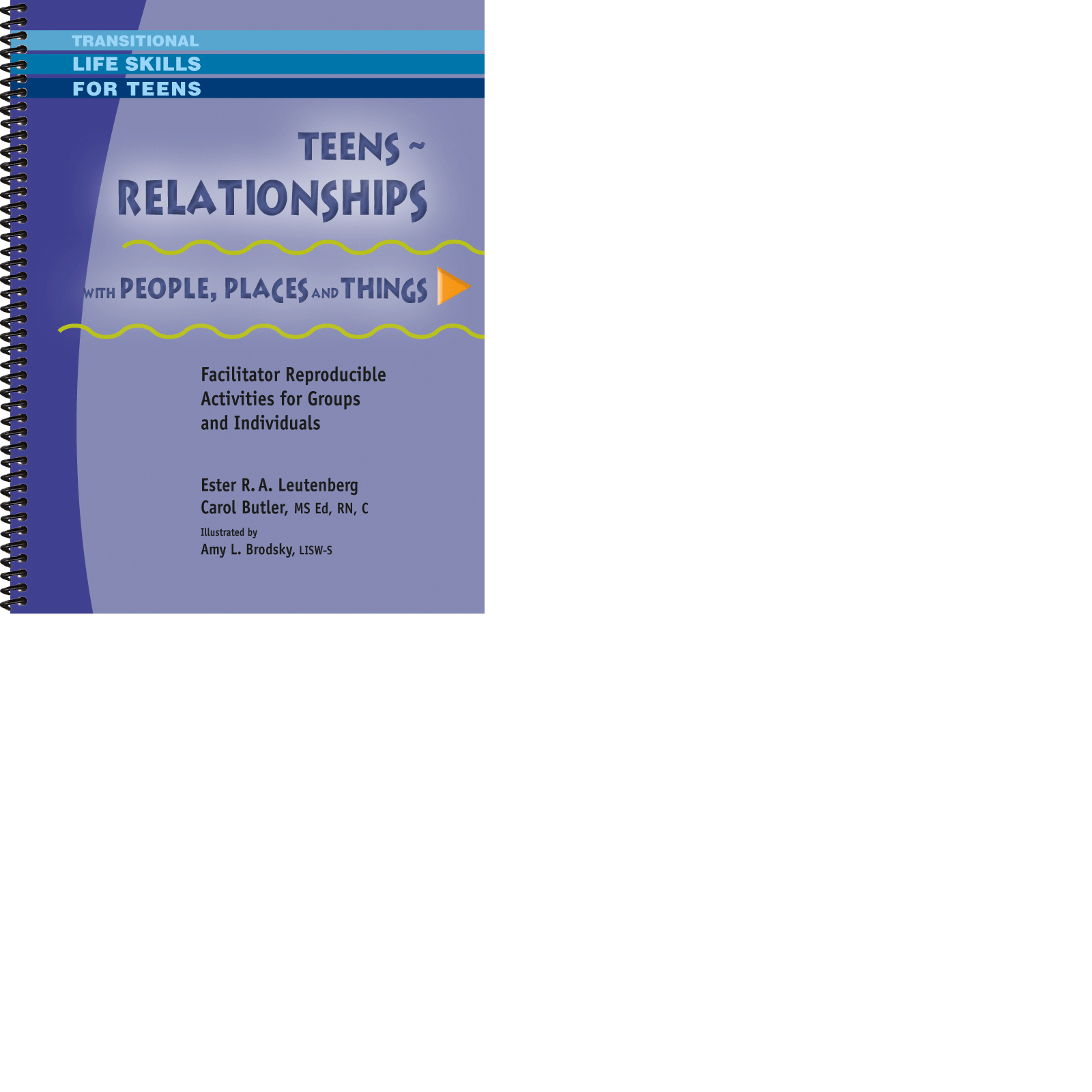Please specify the quantity of product(s).



Teens - Relationships with People, Places, and Things
| Item | Product | Price | QTY |
|---|---|---|---|
| 32746 | Teens - Relationships with People, Places | $50.00 |
Help Teens Develop Healthy Relationships to Prepare Them for Interpersonal Success.
Ester R. A. Leutenberg & Carol Butler, MS Ed, RN, C
132 pages
Developing relationships requires a set of skills that an individual must develop. This book takes the approach of helping teens identify the persons, places, and things that affect interpersonal relationships. The step-by-step activities in this workbook guide teens through developing those skills in an approachable and fun way for adolescents. The relationships they develop at this age will be the foundation for their future relationships. Clinicians can use these workbooks in individual sessions, group sessions, or as homework.
This workbook covers the following teen connections:
- Family /People at Home – helps teens recognize how relationships at home serve as the basis of future relationships.
- Peers – teens feel intense connection with peers, but these intense emotions can make it difficult for teens to evaluate those relationships fairly.
- Romantic Partners – adolescence is often the time individuals experience their first romantic relationship. The workbook guides teens through ways to have a successful relationship.
- Places – physical locations, their memories and impact.
- Tangible Things – money and materialism, and their degree of importance in teens’ lives.
- Intangible Things – ideas, traits and influences that contribute to character.
- Self – a powerful relationship that affects all other alliances.
The seven chapters include:
1. My Relationships with Family/People at Home
Ways to deal with secrets, conflict, control, etc., and how to build love, resilience and trust; how teens wish to be treated and their treatment of caregivers; skills to stop power struggles, problem solve and compromise; dynamics in many types of families, bonds that link, in whom to confide, forgiveness, etc.
2. My Relationships with Peers
Ways to minimize jealousy and enmeshment, expand social supports and personal development; fear of missing out; cliques; embarrassment; cookie cutter categorizations; inclusion, possible motives of people who exclude, invisible scars left by cruelty, how to leave marks of hope and healing, etc.
3. My Relationships with Romantic Partners
Healthy and unhealthy romance, ways to recognize and stop dating violence and other abuse, relationship costs and benefits; how to emerge stronger and wiser after a break up, respectfully initiate a break up, argue agreeably, understand jealousy, decide what love is and isn’t; amusement ride analogies, etc
4. My Relationships with Places
Positive and/or negative effects of one’s most memorable home; places likely to foster optimal development or have detrimental effects; how attitudes toward school affect experiences, ways to work on solutions, not dwell on problems; how one’s place of mind affects peace of mind, etc.
5. My Relationships with Tangible Things
Technology’s social, emotional, educational and other uses and abuses; whether money talks (or NOT); prized possessions, whether one owns or is owned by belongings, materialism, and objects with little monetary value but much meaning, etc.
6. My Relationships with Intangible Things
How to make the most of time and life, freedoms and responsibilities, when to conform or not; pros and cons of competition and cooperation; the magnitude of small acts of kindness, compassion’s benefits to others and oneself; beliefs, little things that are big, things that are broken, silent things that are loud, etc.
7. My Relationship with Myself
Self-image and actualization, ways to support not sabotage oneself, how thoughts affect feelings, how to filter out destructive and consider constructive criticism; ways words can hurt or heal; value of esteem-able actions; mental and physical health, etc.